Why do slugs appear on strawberries and how to deal with them?

Slugs cause huge damage to the strawberry crop - they eat up juicy fruits and sometimes destroy most of the crop. To save the berries, the pest must be fought. For this, a variety of methods are used - chemical, biological and mechanical. Home-grown recipes of our grandmothers and grandfathers also give a good effect. In our article we will tell you how to get a slug out of the garden.
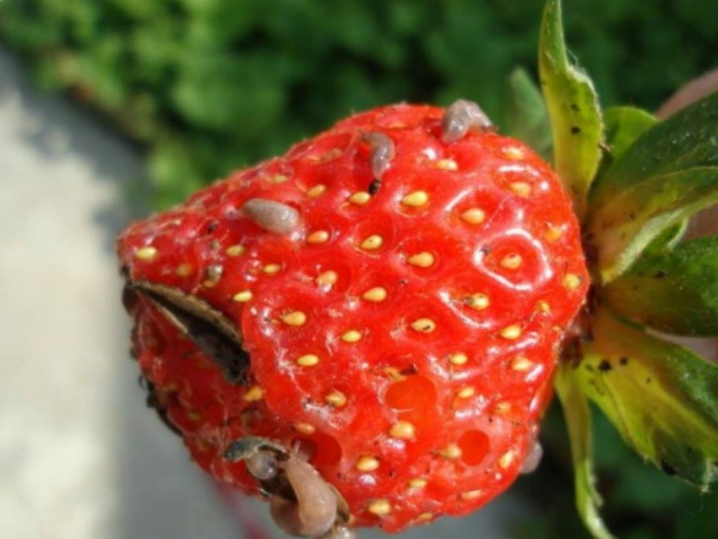
Description
Slugs are a common name for terrestrial gastropods. Outwardly, they resemble a snail, but differ from it in the absence of a shell. The body of this creature is able to change its shape as a result of muscle contraction - at rest the mollusk is wide and shortened, and at the moment of movement it begins to stretch and thin out. In a calm state, its length reaches 5 cm, the color is light, grayish-brown. There are tentacles on the head, the slug uses them for sight and touch.
A huge amount of mucus is secreted on the surface of the skin of a gastropod. It protects the body from drying out and does not damage when rubbed when the slug moves on rough surfaces. In addition, the smell of mucus can scare off some predatory animals.
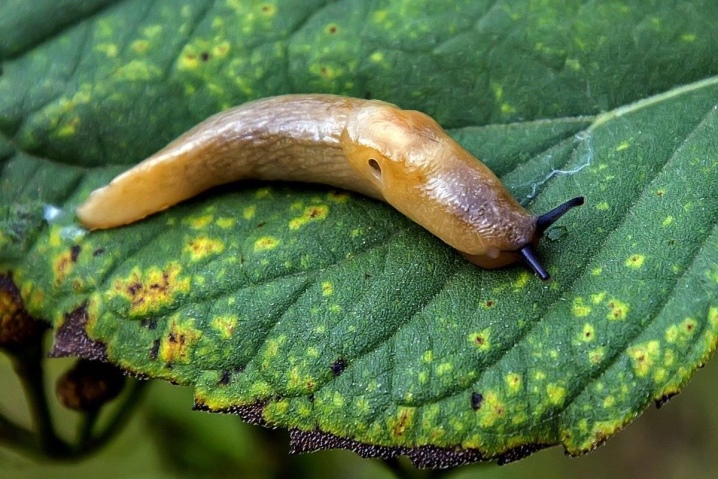
This mollusk is most active at night. In the daytime, he hides under plant debris, in the shade of trees, hides near compost heaps and in the middle of wood debris. Direct ultraviolet rays are dangerous for him, under the influence of the sun, the mucus dries quickly, and the mollusk dies. In a comfortable habitat, a slug can live for 1-2 years. In one season, he lays about 30-40 eggs, and after a month, formed individuals appear from them, which in a couple of months reach the size of adult gastropods and become sexually mature.
In their natural habitat, the enemies of slugs are moles, snake lizards, toads, as well as frogs and shrews. Some species of birds and ground beetles feed on slugs.
But feeding mollusks to poultry (ducks, chickens and geese) is not worth it, because slugs are often carriers of helminths and other parasites.

For what reasons do they appear?
Slugs are most active in the dark. They crawl out to hunt after sunset, when the sun has already gone down the horizon and is no longer a danger to them. These mollusks show great interest in ripe strawberries. They bite into soft juicy cavities and damage them. Such a berry is absolutely unsuitable for human consumption. The activity of gastropods is especially high when natural factors favor their growth and development. So, the mass invasion of mollusks is facilitated by:
- warm summer with prolonged downpours;
- excessive planting of a plot with strawberries;
- thickets of weeds;
- dense soil that retains water;
- woody remains from the last season;
- the presence of boards, polyethylene, roofing material and other construction waste in the garden area.
In hot and dry weather, the pest population decreases markedly. In addition, it has been noticed that well-groomed areas are attacked by this gastropod much less often.
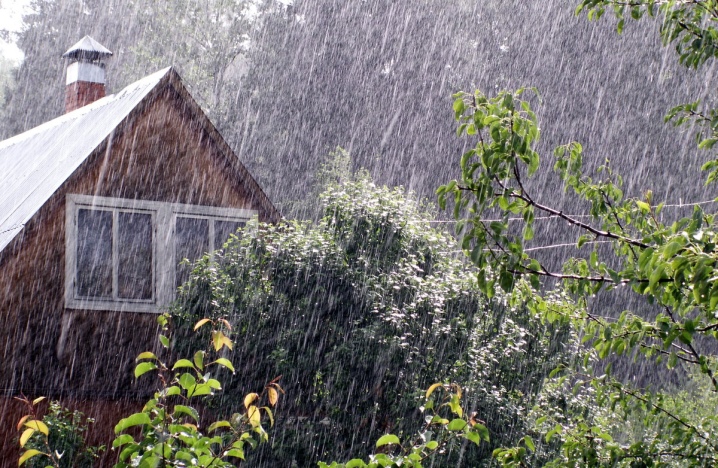
Signs of defeat
It is very simple to understand that you have a slug - this can be seen from the nibbled berries. In the daytime, gastropods hide under leaves, in soil cracks and near debris left in the beds.During these hours they hardly show themselves, so it can be quite difficult to find them. However, the following factors may indicate the presence of slugs:
- holes and silvery spots on strawberry leaf blades;
- whitish shimmering mucus on the leaves and berries of the plant, as well as in the aisles along the path of the slug.
Slugs are carriers of fungal and viral diseases. Pathogenic fungal spores in the digestive organs of gastropods are not destroyed, therefore, along with waste products and mucus, infections spread throughout the entire area.
Thus, wilting of garden crops can become an indirect sign of the presence of a slug.
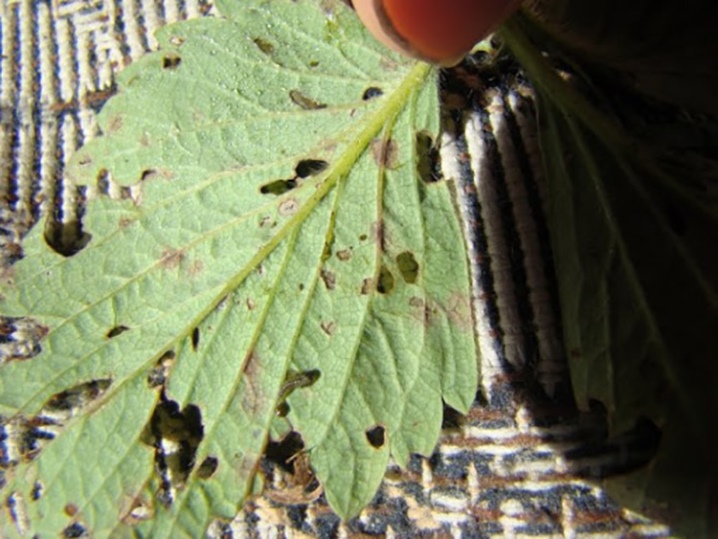
Mechanical methods of struggle
Our grandparents used mechanical methods to get rid of slugs - the easiest way is to remove them with our own hands. These are large mollusks, in green strawberry bushes they stand out for their color, moreover, they do not know how to crawl and fly quickly. Therefore, it is not difficult to detect gastropods and remove them from the surface. It is necessary to collect slugs in the evening, when they crawl out to "hunt", the caught individuals are burned.
Traps can be used to make your job easier and speed up the search for gastropods. For example, take any board (a piece of slate, linoleum or roofing material), grease it with kefir or sour cream and place it on a small elevation. At night, slugs will begin to creep on the smell from all areas. All that is left for the gardener in the morning is simply to take the board and shake the slugs off of it into the bag.
The "beer trap" is considered to be no less effective. It's no secret that gastropods are big lovers of this drink, although it is toxic to them. To catch slugs, you need to prepare several plastic containers and dig them around the strawberry bed so that the walls of the container are below ground level. A little intoxicating drink is poured at the bottom and the trap is left overnight.
As practice shows, dozens of mollusks slide down to beer, so that in the morning you can collect an impressive "harvest" of the pest.
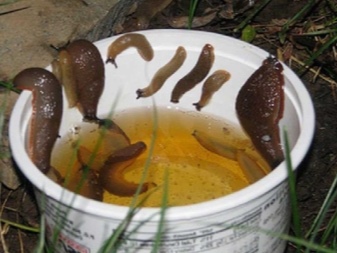
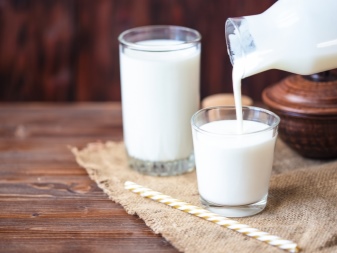
How to process?
If you have slugs, different methods can be used. To permanently get rid of the gastropod, you can spray the plants with chemical compounds. If you want to preserve the harvest as much as possible, it is better to give preference to folk remedies.
Chemicals
Chemical treatment of gastropods is highly effective, but not always safe. The fact is that the period of the invasion of mollusks coincides with the time of fruiting of strawberries. By treating the bushes with pesticides, you run the risk of getting berries in which the content of toxic substances is many times higher than the permissible limits. To be on the safe side, you can use one of the following options.
- Spray with pesticides, but do not eat the fruits in the current season. This method is optimal when there are too many shellfish, and most of the berries are already damaged, and you cannot count on a good harvest.
- Carry out processing after the surviving berries are harvested and all the leaves are cut. By the beginning of next spring, the pesticides will be inactive.
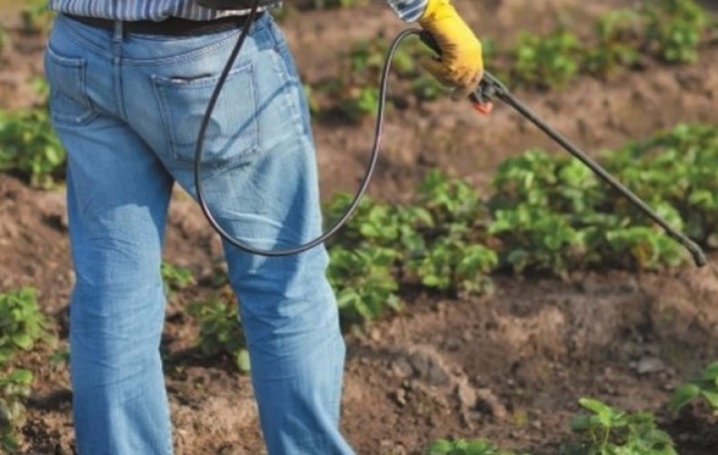
To combat gastropods, it is necessary to cultivate the land, most often it is sprinkled with slaked lime - about 30 g of the preparation will be required per square meter of planting. Slugs do not tolerate dry fertilizers. Therefore, superphosphate can be scattered around the garden bed and in the aisles; it will take about 40 g per square meter of the treated area.This method can be used if the strawberry planting occupies a small area, otherwise the cost of fertilization will many times exceed the cost of the harvested crop.
Such treatment should be carried out in the evening before the period of pest activity. When the drug comes into contact with the skin of mollusks, the latter get burned and die.
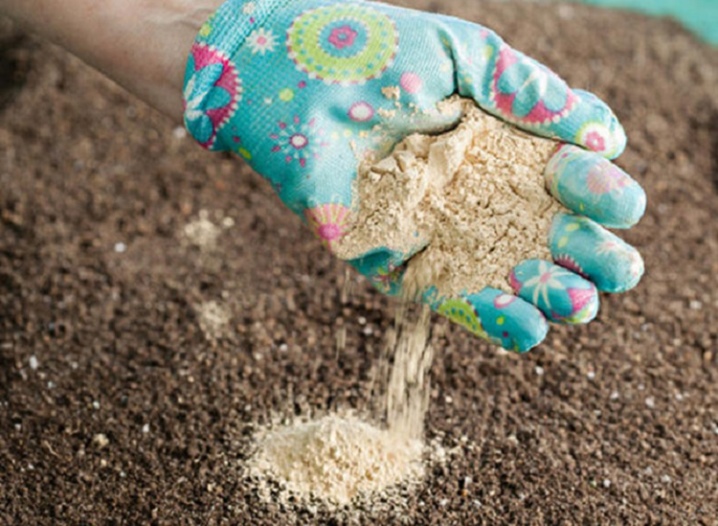
The drugs "Slizneed", "Ulicid", as well as "Metaldehyde" and "Thunderstorm" are distinguished by high efficiency in the fight against slugs. In accordance with the manufacturer's instructions, the products are scattered on garden paths, near damaged bushes and in aisles. Usually 5 sq. m of the plot take 15 g of the drug. These chemicals belong to the third hazard class, that is, they are of low toxicity to people and pets.
Iron vitriol has proven itself well in the fight against garden molluscs. It can be poured in pure form or mixed with lime or sand. Gastropods bypass such beds by the side, since upon contact with iron vitriol they instantly die.
When processing strawberries with pesticides, you should use personal protective equipment - gloves, a respirator and special shoes.
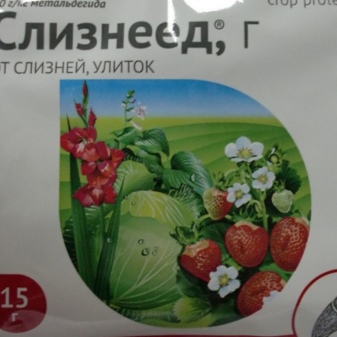
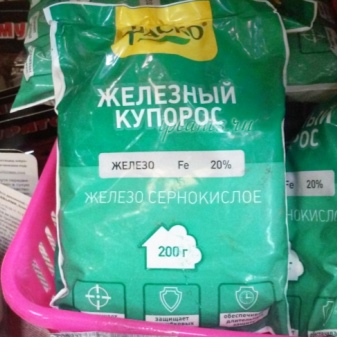
Folk remedies
If the volume of the lesion is small, it is better to use folk remedies without chemistry.
- Birch tar. An effective remedy for slugs. For processing, you need to take small napkins, grease them with tar and spread them around the strawberry garden. The smell of the substance scares away slugs and becomes a natural obstacle to their movement.
- Garlic. 250-300 g of finely chopped garlic is placed in a bucket of water and infused for about a day, stirring from time to time. The resulting solution is poured into a spray bottle and strawberry leaves are treated on both sides.
- Mustard powder. To draw up a working infusion, 50-70 g of dry mustard is dissolved in 100 ml of water, infused for 5-6 hours, brought to a volume of 5 liters. Processing is carried out in the evening or in cloudy weather.
- Tobacco dust. The smell of tobacco and makhorka effectively repels snails and slugs, as well as many other pests. To prepare an effective composition, 1 kg of tobacco dust is poured into a bucket of water, infused for a day and 50 g of grated laundry soap is added. The resulting solution is mixed and sprayed.
- Bitter pepper. 1 kg of fresh pepper is thoroughly chopped and poured with a bucket of water. Withstand 2-3 days, then boil over low heat for 40-60 minutes, cool and process strawberry bushes abundantly. In the absence of a fresh vegetable, you can pour the infusion of hot pepper powder - it will take 50-60 g.
- Ammonia. 4 tbsp. l. ammonia is dissolved in a bucket of water and the strawberry beds are treated.
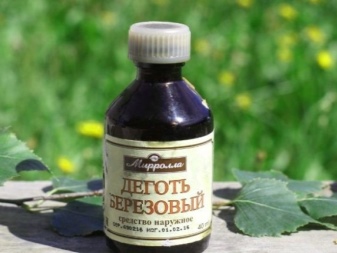
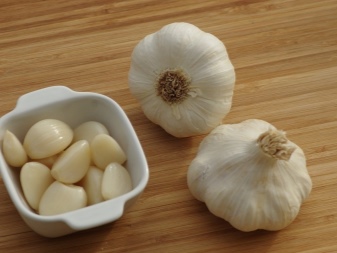
A good effect is obtained by treating the site with wood ash. It does not pose any threat to strawberries, moreover, it can be used as a top dressing, so it can be taken "by eye". As an alternative to ash, you can sprinkle slaked lime on the ground. In this case, when processing the site, you should adhere to the standard - 15-20 g / sq. m.
Prevention measures
To protect plantings from slugs, it is important to take preventive measures. It was noticed that the culture planted in high beds is damaged to a lesser extent. The optimum height is 30 cm. The beds are usually limited to pieces of slate or boards. In addition, you can buy ready-made beds at any store for gardeners and gardeners.
To prevent gastropods from taking root in your garden, all weeds near the strawberry garden must be mowed in a timely manner, and the weeds must be pulled out. If the plantings are excessively thickened, they must be thinned out - the bushes should be ventilated on all sides, and dry quickly after irrigation. From time to time, the soil between the rows should be thoroughly loosened.
Mulching can replace loosening and weeding.
Against gastropods, it is best to use mulch from small sawdust, as well as needles. Their sharp elements injure the gastropods, and they cannot move.
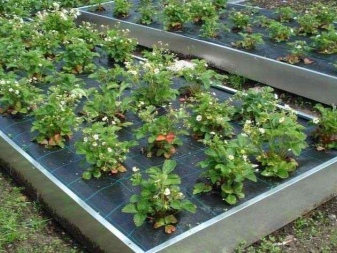
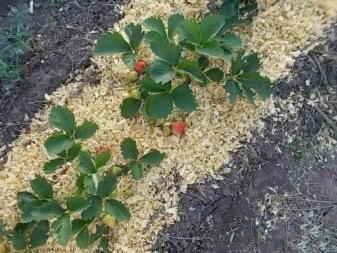
Shellfish are deterred by strong odors. Therefore, gardeners practice mixed planting. For example, marigolds and garlic are planted next to strawberries, and parsley and mustard are sown along the edges of the garden - these plants will become an effective protection for the strawberry garden.
In the autumn, before the onset of frost, you should dig up the ground to the depth of a shovel bayonet. Slugs in the ground will be on the surface and will lose their comfortable wintering conditions. At this point, it will be useful to add some wood ash to the ground. In the spring, the treatment is repeated so that individuals who survived in the winter die under the influence of direct sunlight.
And finally hedgehogs are considered uncomfortable neighbors for mollusks; these predators eat slugs with great pleasure. You can buy a thorny protector of plantings in the nursery, or you can lure him to the site - for this you need to organize a small pond, an ordinary basin of water will be quite enough.
By following these simple rules, you can save the strawberry beds from the slug, preserve the harvest and enjoy delicious juicy fruits.
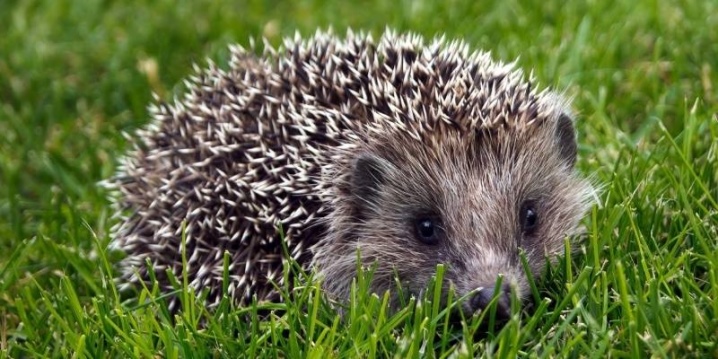
For how to deal with slugs on strawberries, see the next video.













The comment was sent successfully.